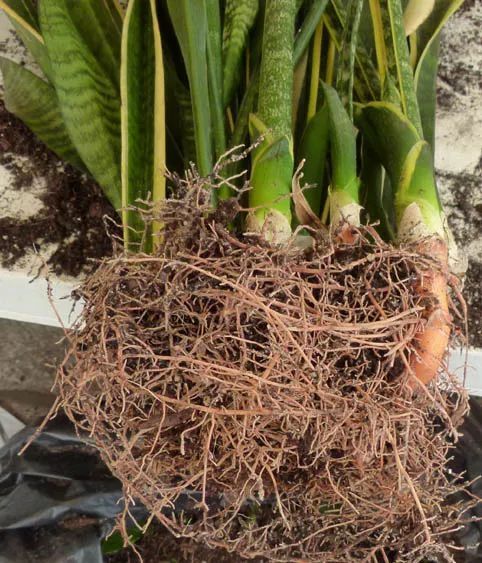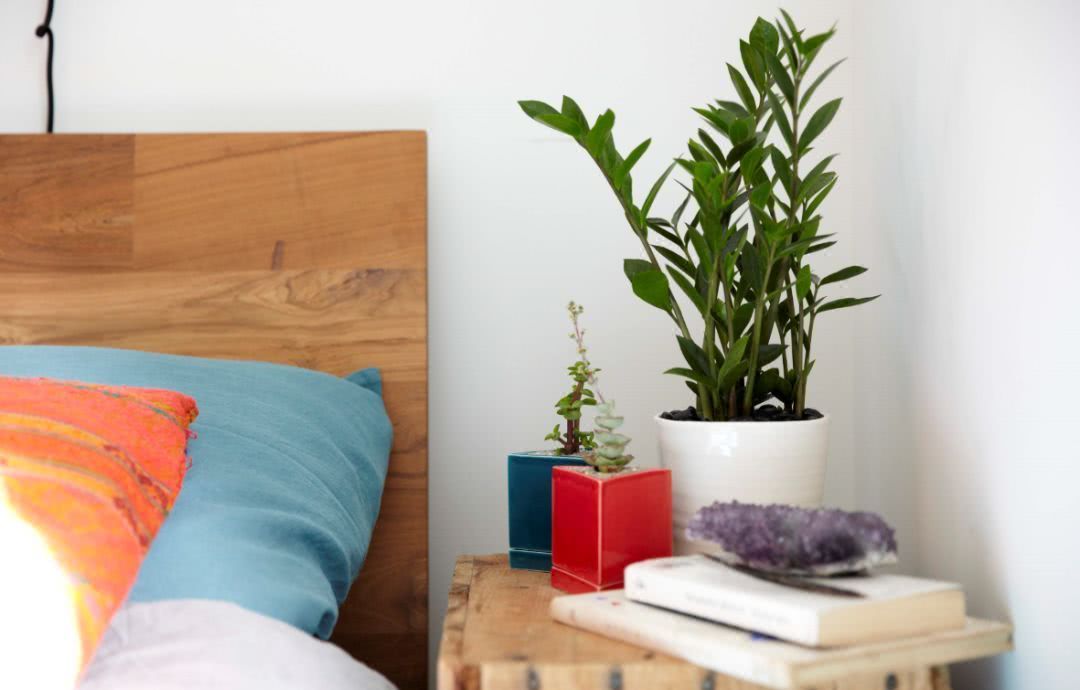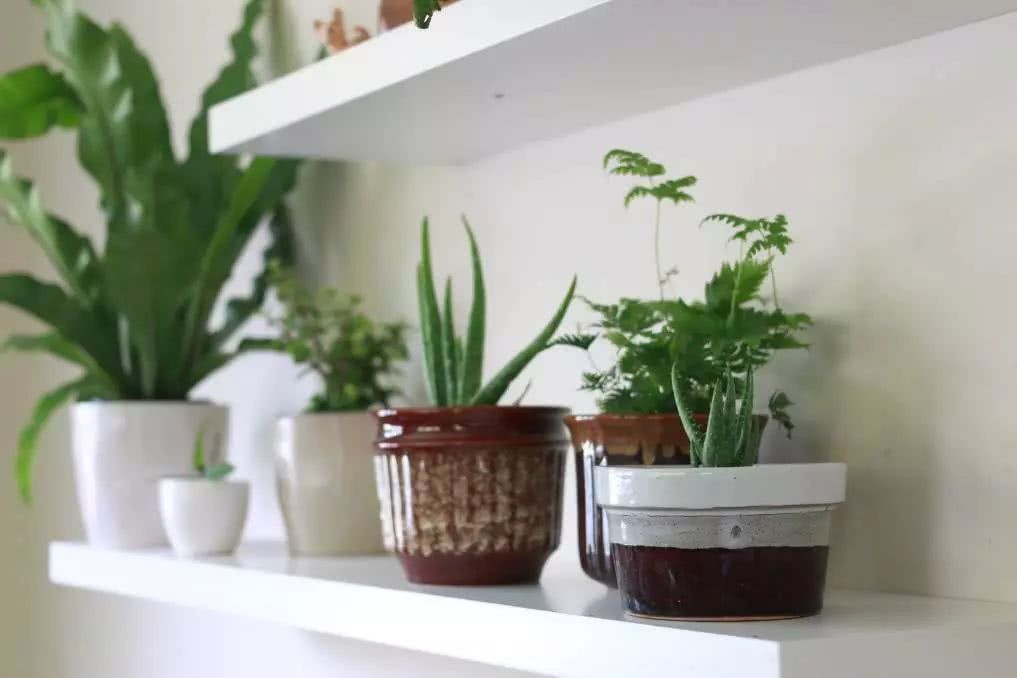These three methods are enough for office plant reproduction.

The plants raised in the office are no different from those raised outdoors. If you want them to reproduce, you just need the plants to promote rooting, so that the plants can survive independently, and it is very easy to cultivate more plants. Here are some of the most common techniques.
Due to the different types of plants, their reproduction methods will be different, to distinguish this, some plants like to grow lateral buds, some plants have long branches, and some plants can blossom and bear fruit.
1. Ramet propagation
Plants will grow some small lateral buds next to the main root, and when these lateral buds grow to a certain height, they can be replanted in pots, that is, separate plants.
We can cut off these lateral buds directly with the root system, dry the wound, and then replant them into a new flowerpot.
There are many plants that are easy to grow lateral buds, including common aloe, tiger skin orchid, longevity flower, gentleman orchid, Guanyinlian, hanging orchid, one-leaf orchid, iris and Boston fern.
Ramet propagation is generally carried out in the spring and autumn season, and when its lateral buds grow to about five centimeters, it can be cut off with its roots and re-cultivated with some loose and drained basin soil.
two。 Cuttage propagation
Most plants can be propagated by branch cuttings, as long as a stem or even a leaf, can be replanted into a new potted plant, namely stem propagation or leaf cutting.
The method of cutting propagation is also very simple. First of all, you should choose some strong plants and cut off a stem about 9cm long and 12cm long from its branches. This stem should grow strong and do not look too old or too tender.
The cut branches should remove the leaves at the bottom, leave 4 leaves at the top, and the oblique shears at the bottom of the branches can be dipped in a little rooting powder to prepare the loose drained sandy soil, or the cuttings can be cut in water for three centimeters and changed once a day, which can also promote three roots, and then they can be transplanted into the soil.
There are many plants suitable for cutting propagation, including common Yushu, longevity flowers, green apple, rubber tree, millennium wood and rich tree and so on.
3. Striping propagation
Striping propagation is divided into air striping propagation and ordinary striping reproduction, this method of propagation is also very simple, choose some branches to grow more robust plants.
The specific method of operation is to press a longer branch and vine into the soil. If the branch is relatively large, you need to use a sharp knife to press it into a part of the soil for circular peeling. The length of the peeling is about three centimeters. Prepare to loosen the drained sandy soil, press this section of vine or branch into the soil, as long as it is fixed with some big stones or other heavy objects. Finally, keep the soil moist and the environment warm. After two or three months, the branch can be cut off and become a separate potted plant.
There are many plants suitable for striping propagation, including common ivy, green pineapple, hydrangea, orchid, heart leaf green velvet and orchid and so on.
If you want to successfully do aerial striping propagation, you need to try it a few more times, so it is easier to succeed. This method is to peel the branch in a ring, that is, to peel off a 3-to 5-centimeter section of skin. All the way to the cambium of this branch to avoid damaging the stem in the bark.
Also wrap it in some water moss or water-retaining soil to avoid the sun and keep the water moss moist. After it grows full of roots, it can be cut directly and planted in a new basin soil.
Suitable for aerial striping propagation of plants, including common millennium wood, rich tree, happiness tree, rubber tree, duck foot wood and so on.
4. Other methods of reproduction
Other propagation methods include sowing propagation, tissue propagation and tuber (bulb) propagation.
Many herbaceous flowers are generally propagated by sowing, and they grow very fast and are suitable for sowing and breeding. The most common ones for tissue propagation are new varieties such as orchids and Boston ferns, while others are cultivated from tubers or bulbs at the bottom of the rhizome.
- Prev

These six kinds of potted plants are especially suitable for raising bedrooms to release oxygen at night to purify harmful gases.
Nowadays, people basically know that growing plants indoors is beneficial to the family. They can absorb carbon dioxide and release oxygen, increase indoor oxygen content, and absorb indoor harmful gases, but few people will understand that most of them.
- Next

It is enough to maintain these nine kinds of potted green plants in a humid and hot bathroom.
There are many plants that can be placed indoors, illuminate the whole indoor environment, and purify the air, but not all plants are suitable for growing in small spaces, especially in bathrooms with high temperature, poor ventilation and high humidity.
Related
- Wuhan Hospital Iron Tree Blooming Result Was Instantly Frightened by the Gardener Master
- Which variety of camellia is the most fragrant and best? Which one do you like best?
- What is the small blue coat, the breeding methods and matters needing attention of the succulent plant
- Dormancy time and maintenance management of succulent plants during dormancy
- Minas succulent how to raise, Minas succulent plant pictures
- What are the varieties of winter succulent plants
- How to raise succulent plants in twelve rolls? let's take a look at some experience of breeding twelve rolls.
- Attention should be paid to water control for succulent plants during dormant period (winter and summer)
- Watering experience of twelve rolls of succulent plants
- Techniques for fertilizing succulent plants. An article will let you know how to fertilize succulent plants.

